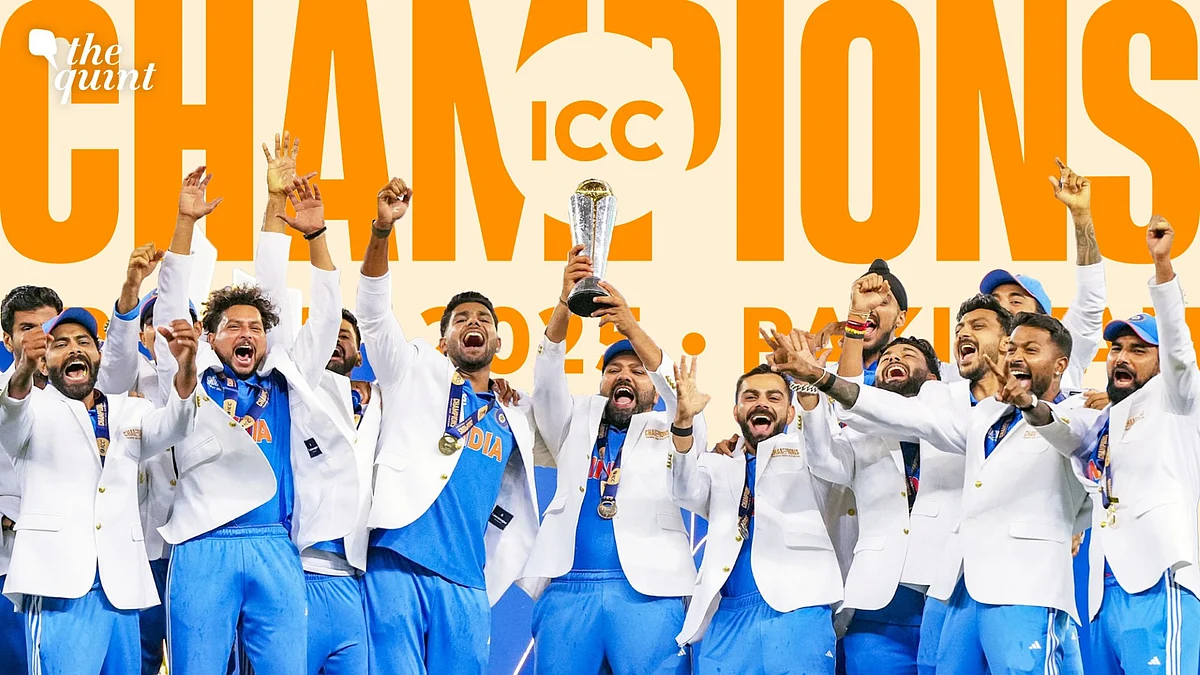ICC Champions Trophy 2025 Was Skewed? Perhaps, but India’s Triumph Was on Merit
India's win in Champions Trophy 2024 was due to cricketing excellence that no travel itinerary could diminish.

advertisement
New Zealand – 7048 kilometres. India – Zero. New Zealand – 12+ hours of travel time. India – not a single second. New Zealand – four venues. India – just one.
It is customary for numbers to do rounds during the pre-match discourse of a major cricket final. Those numbers, however, revolve around averages and strikes rates and economy rates.
A potent narrative emerged: the tournament had been orchestrated for India's triumph. The absence of Pakistani representation in the final – despite Pakistan being the host nation – only intensified these suspicions.
What Was Said Before the Match?
Michael Atherton claimed India had an “undeniable advantage.”
Nasser Hussain echoed a similar opinion.
New Zealand head coach Gary Stead might not have opined on India’s advantage, but as an afterthought, explained how his team was handed a disadvantageous position.
South African players were slightly on the conspicuous side in this regard. Rassie van der Dussen claimed one does not require rocket science knowledge to understand India’s edge over everyone else. With Delhi Capitals now in the market after Harry Brook’s withdrawal, has he shot himself in the foot? David Miller, who surely will feature for Lucknow Super Giant later this month, voiced his support for the Kiwis in the final.
The Resentment Has Substance to It, but India Can’t Be Blamed
The resentment was not without merit, despite Indian head coach Gautam Gambhir dismissing them as "perpetual cribbing." The Champions Trophy's organizational structure contained inherent flaws. India's decision not to travel to Pakistan created logistical nightmares for other teams.
But it wasn’t. India's stranglehold over international cricket has become an incontrovertible reality. From once scampering for tickets, let alone recognition, the nation has seen how the 1983 World Cup triumph, followed by the termination of Doordarshan’s monopoly and Mark Mascerenhas’ WorldTel paying $10 million for TV rights to the 1996 World Cup, the growth has been constant.
It attained a staggering level when, in 2008, BCCI launched the Indian Premier League with a truly unprecedented $1.1 billion television deal and $700+ million franchise fees.
Yet, to attribute India's Champions Trophy dominance solely to structural advantages or financial disparity – BCCI's $2.25 billion net worth does indeed dwarf New Zealand Cricket's $42 million – would be a disservice to their cricketing brilliance.
Beyond the Narrative: How Doubling Down on Spin ‘Scripted’ India’s Victory
Beyond this narrative, what worked for India was cricketing brilliance. It began with team selection, as the national selectors doubled down on what constitutes the strength of the team’s bowling unit – the spinners.
Contrary to opposition batters' struggles, Dubai's pitch was never a spinning minefield. Historically, pacers have maintained the lowest bowling average in ODIs there, closely followed by left-arm wrist spinners and leg-break bowlers – the last pair being precisely the combination India deployed.
The resultant concoction was 26 wickets. Besides, they merely conceded 738 runs in 204.3 deliveries, at an economy rate of 4.51. With an average of 28.38, and a strike rate of 37.73 and 507 dots, they proved to be unplayable.
Best spin bowling average at Dubai in Champions Trophy 2025:
India – 28.38
Bangladesh – 37.50
New Zealand – 40.00
Pakistan – 40.50
Australia – 59.67
Best spin bowling strike rate at Dubai in Champions Trophy 2025:
India – 37.73
New Zealand – 51.43
Pakistan – 58.50
Bangladesh – 60.00
Australia – 62.33
Kuldeep Yadav, despite going wicketless against Australia, had retained his place, which he justified with the wickets of Rachin Ravindra and Kane Williamson. The latter, who was fresh from a century against South Africa, has struggled against left-arm wrist spin. Not only did he lose his wicket to Kuldeep twice in ODI cricket prior to yesterday, but he has also been unsettled by the likes of Lakshan Sandakan and Tabraiz Shamsi. Kuldeep dismissed him in only his second over.
A Word on the Batters
Bowlers were likely to rule the roost in Dubai, but the batters did what was expected from them, scoring 1210 runs at an incredible average of 41.72, where no other team managed to get anywhere near the figure of 30.
Best average at Dubai in Champions Trophy 2025:
India – 41.72
Australia – 25.70
New Zealand – 25.24
Pakistan – 22.40
Bangladesh – 21.90
Most tellingly, Indian batters refused to fall into the spin trap they had so expertly set for others – a vulnerability that had previously been their undoing. Rohit Sharma’s troops averaged 43.43 against spinners, as opposed to New Zealand’s 20.93 and Australia's 21.50.
The Verdict
Indeed, India enjoyed advantages unique to their position as cricket's commercial juggernaut – a reality likely to persist through future ICC events. To the victor go the spoils. Advocacy for a more neutral structure, one which has a semblance of equilibrium in power dynamics, is entirely justified.
What is equally justified is that India won the Champions Trophy owing to their sheer cricketing excellence, not cause the structure was skewed.